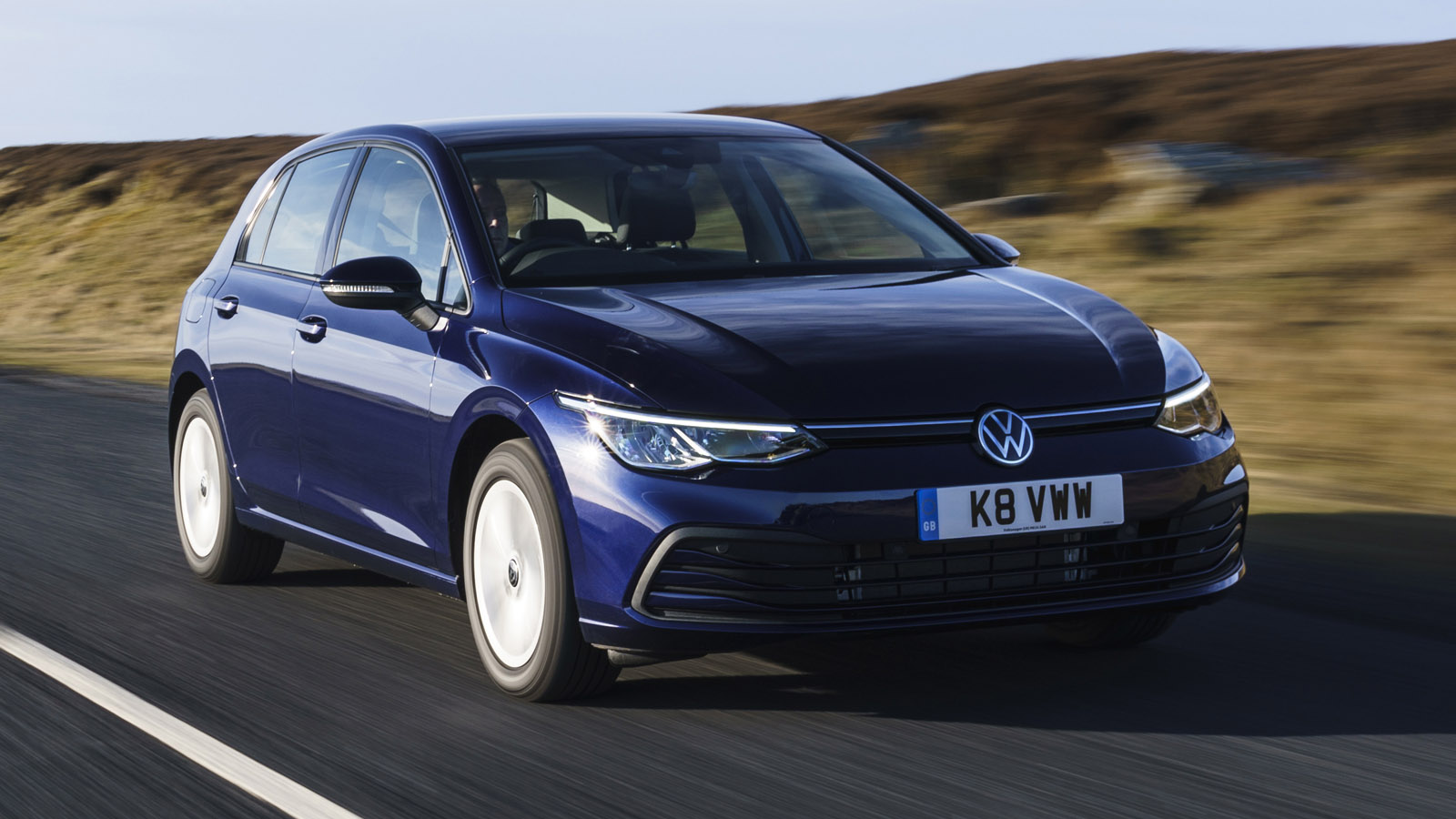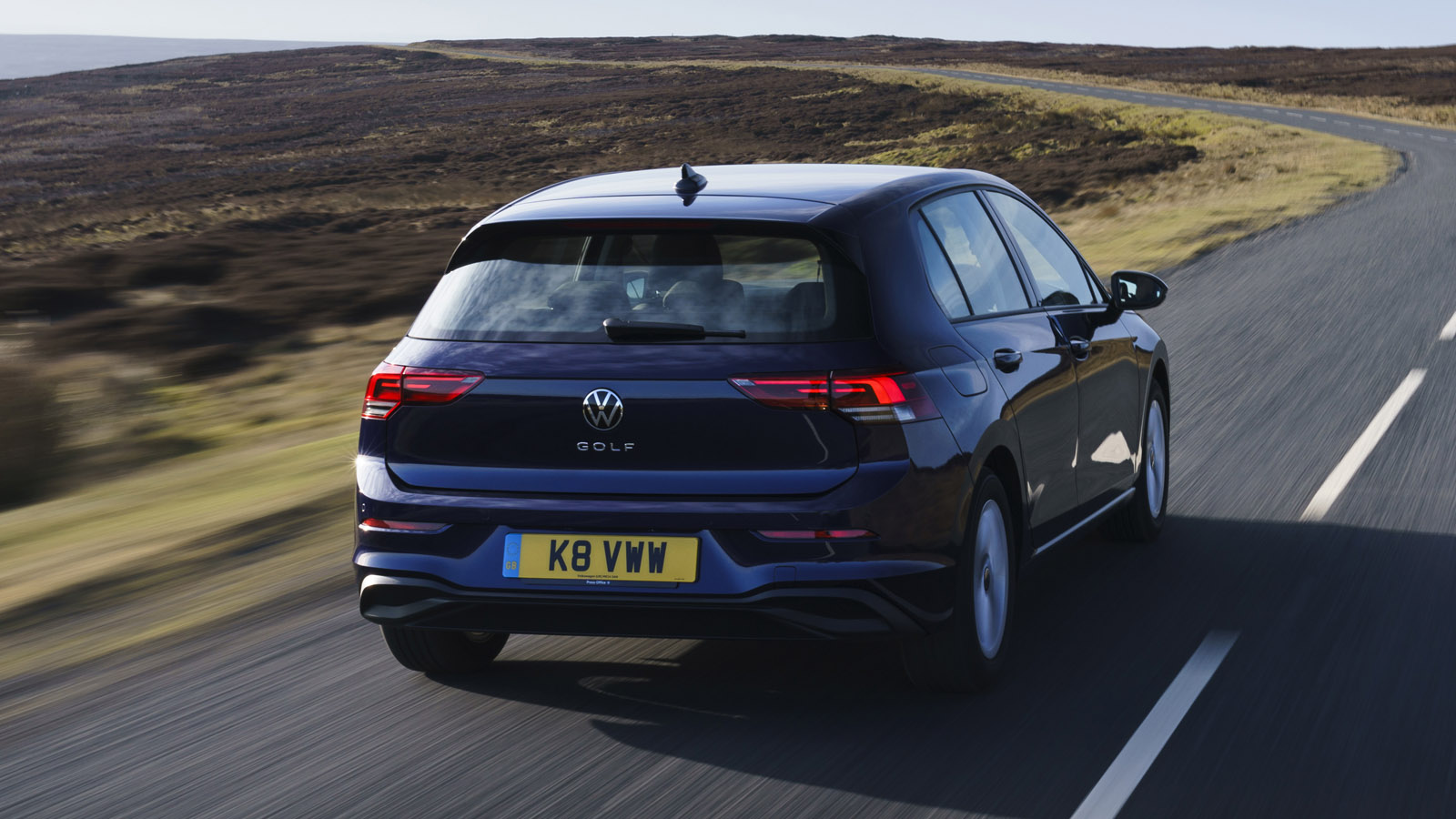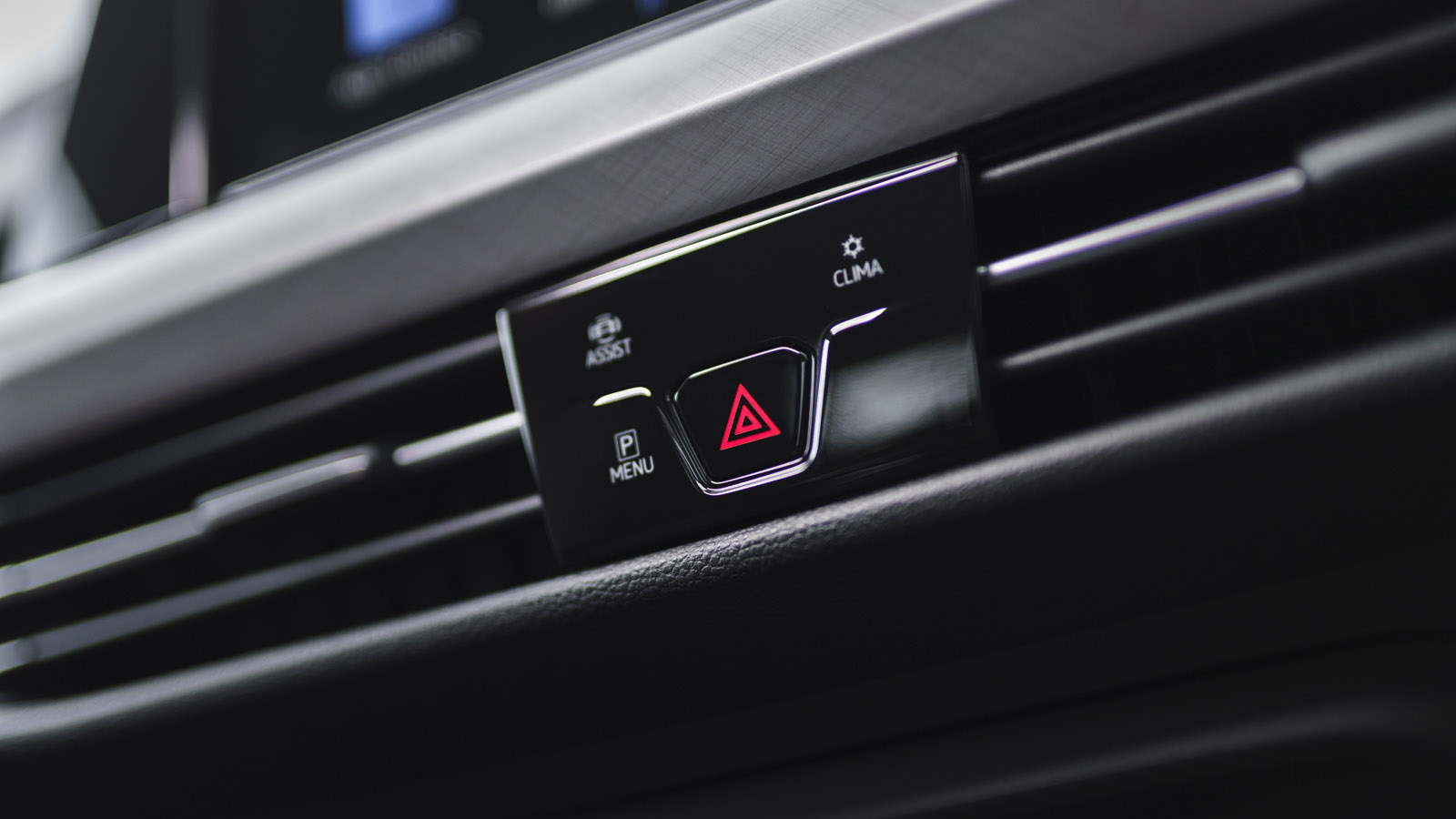
SPEC HIGHLIGHTS
- BHP
115bhp
- 0-62
10.2s
- CO2
91g/km
- Max Speed
126Mph
You’ve driven the new Golf before, yes?
Indeed we have, but now the first cars have arrived in Blighty we’ve an opportunity to revisit the eighth-generation of VW’s ubiquitous family hatchback on familiar soil. And we’re starting at the cheaper end of the spectrum, with the most outwardly unappealing one we could find. It’s a 2.0-litre diesel making just 113bhp in the lowliest available trim.
Diesel? Yuck.
We’ll get to that in a minute. First we need to talk about the Golf’s cabin, because while much of the new car is evolved from what went before – after all the Mk8 is based on the same MQB platform as the Mk7 – the interior is a big step. Mostly in the wrong direction.
It remains spacious, though not the most spacious in its class, largely well-made and comfortable. But Volkswagen has done away with most of the physical buttons, switches and knobs. A few remain on the doors and steering wheel, but elsewhere the new Golf relies almost entirely on touch-sensitive panels.
Sounds cool.
Admittedly it does look quite cool, yes. Clean and minimalist, but oh so annoying. That big touchscreen is at least standard in all Golfs, and it runs a clever new operating system that looks crisp and responds snappily to your inputs. But its glossy black plastic surround looks cheap, and to use it on the move you have to brace your hand on the ledge below. Which would be fine were said ledge not a row of touch-buttons for controlling volume and temperature…
These controls are far less intuitive than a simple twiddly knob or rocker switch, don’t always respond to your prods and swipes and aren’t illuminated, meaning they’re almost completely invisible at night. Certain menus at least have shortcut ‘buttons’ on the centre console, but these are small, badly marked and not that easy to reach.
Adding complication for style’s sake is a very un-Volkswagen-y thing to do, yet that’s exactly what it’s gone and done. Tried to make its interior look modern and cutting edge, and in doing so compromised on usability and safety.
Sounds suboptimal. What can you tell me about the engine?
Top Gear
Newsletter
Thank you for subscribing to our newsletter. Look out for your regular round-up of news, reviews and offers in your inbox.
Get all the latest news, reviews and exclusives, direct to your inbox.
VW might be partly responsible for turning the Great British Public off oil-burners, but it still sells them in huge quantities. Still investing, too, in making them cleaner and greener than ever before. That’s why both of the new Golf’s diesels – the same 2.0-litre four-cylinder with either 113bhp (tested here) or 148bhp – feature something called “twin dosing”, which claims to have cut nitrogen oxide emissions by up to 80 per cent versus the last-gen.
Until VW launches the plug-in hybrid GTE, this 113bhp car is the most economical Golf you can buy. The company claims 68.8mpg – and you might actually see that on a long motorway haul. In mixed driving you’ll still see over 50mpg, giving a theoretical cruising range of over 500 miles.
More impressive is that far as four-cylinder diesels go, this is an especially refined one. It doesn’t transmit any nasty vibrations through the seat, steering wheel or pedals, and remains hushed unless you really clog it. And it doesn’t feel sluggish or especially slow, despite having not much more than 100bhp and a 0-62mph time somewhere in the low tens. Colour us impressed.
Does it handle?
Well it cruises nicely, with little wind noise to speak of, and is easy to drive smoothly thanks to evenly-weighted pedals and a much improved six-speed manual gearbox. But given lesser-powered Golfs like this one get twist-beam rear suspension (while those with over 148bhp and up get multi-link), and the heavy diesel engine hanging over its nose, this was never going to be the best-handling Golf. That said while it isn’t as much fun as a Focus, at least in this spec, it steers faithfully, if without any real feel, and resists understeer well.
Fundamentally this TDI is a motorway Golf – one you should only really consider if you spend a lot of time on the M1. Those who don’t should get one of the petrols – the most popular is set to be the 128bhp 1.5-litre, which is ok.
The driving position and seats are well set-up for long drives, but the ride can feel a bit knobbly at times. Even on the smaller wheels of our ‘Life’ spec test-car.
Golf Life?
Yup. Life is the lowliest of the three spec levels. Might look a bit dowdy with its small wheels, but it’s pretty well appointed. Gets all the key safety tech.
‘Style’ and ‘R-Line’ are mostly visual upgrades, though the former adds fancier LED headlights and three-zone climate control, while the latter gives lower, stiffer suspension, progressive steering and drive modes. VW hasn’t gone the way of Mercedes and bundled everything into packs, so you can still choose individual options without having to pay for a load of kit you don’t need or want.
Golfs start at £23,300 for the 1.0-litre petrol, with the entry-level diesel we tested coming in at £24,670.
Still a fine hatchback, despite issues with the interior, but class best? Keep an eye open for when we test it against rivals and get our hands on other engines/specs.
Featured







